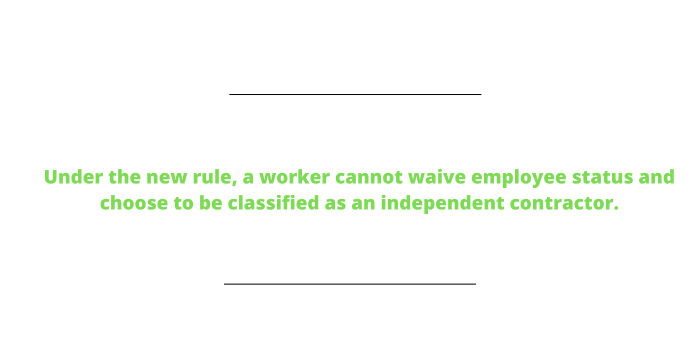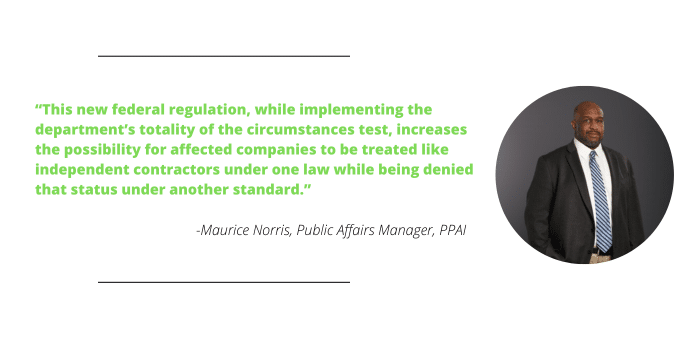The US. Department of Labor (DoL) announced what it has deemed a final rule on the classification of workers as either employees or independent contractors under the Fair Labor Standards Act.
The rule aims to provide guidance to avoid improperly classifying an employee as an independent contractor potentially denying such employees their rights such as minimum wage and overtime pay.
- The ruling could have massive implications for the promotional products industry, as a significant portion of promo’s salesforce intentionally consider themselves to be independent.
- PPAI Media has covered the reasoning and experiences of promo pros who willingly choose to be independent contractors.
PPAI has taken a public stance against the proposed DoL rule in the past, arguing that the promotional products industry has been unfairly lumped with other industries in which workers are commonly misclassified as independent contractors against their wishes.
“This decision creates inherent confusion,” Maurice Norris, PPAI’s public affairs manager says. “There are at least four federal laws and two federal regulations that define independent contractors, and several states have their own criteria. This new federal regulation, while implementing the department’s totality of the circumstances test, increases the possibility for affected companies to be treated like independent contractors under one law while being denied that status under another standard.”

The Department Of Labor Rule
This final rule is set to be effective March 11, 2024.
It will replace the 2021 Independent Contractor Rule that the Department of Labor has deemed inconsistent with the law and judicial precedent. It will not adopt the previously considered “ABC” test that required three specific factors.
“Misclassifying employees as independent contractors is a serious issue that deprives workers of basic rights and protections,” says acting Secretary of Labor Julie Su. “This rule will help protect workers, especially those facing the greatest risk of exploitation, by making sure they are classified properly and that they receive the wages they’ve earned.”
- The new rule restores multifactor analysis to determine the classification of an employee.
The rule includes six factors that guide the analysis and determination of whether a worker is an employee or independent contractor. Those factors include:
- Any opportunity for profit or loss a worker might have.
- The financial stake and nature of any resources a worker has invested in the work.
- The degree of permanence of the work relationship.
- The degree of control an employer has over the person’s work.
- Whether the work the person does is essential to the employer’s business.
- The worker’s skill and initiative.
Notably, under the new rule, a worker cannot waive employee status and choose to be classified as an independent contractor. The Department of Labor states, “The Supreme Court has explained that permitting employees to waive FLSA rights would harm other employees and undermine the Act’s goal of eliminating unfair methods of competition in commerce.”

Perhaps Not The Final Word?
PPAI has been engaging on this issue in the legislative and regulatory space for years, including providing numerous action alerts from PPAI members to their legislators, positing official remarks in regulation.gov, and meeting directly with Congress and the Department of Labor.
- Similar forms of advocacy and involvement will continue in the wake of this announcement.
“PPAI will continue to engage on this matter as further developments occur,” Norris says.
- Additionally, U.S. Senator Bill Cassidy (R-La.), ranking member of the Senate Health, Education, Labor and Pensions Committee, announced he will introduce a Congressional Review Act resolution to repeal the DOL’s ruling on this matter.
“Independent contractors, or freelancers, are shielded from forced or coerced unionization that would strip their flexibility away,” Cassidy says. “This has made eliminating freelancing a top priority for large labor unions who want more workers paying forced union dues. This is yet another example of the Biden administration prioritizing unions over Americans who choose to earn a living without participating in a union.”


